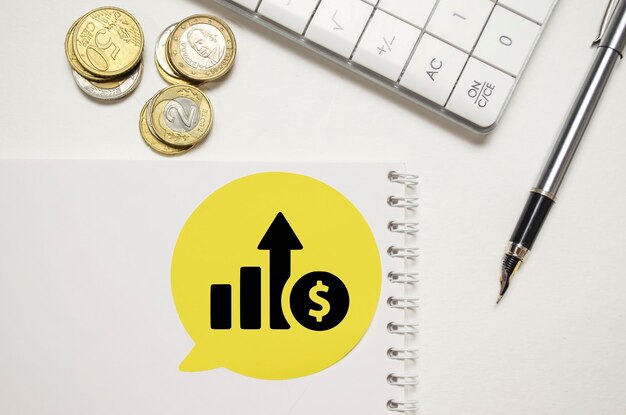Understanding How High-Yield Savings Account (HYSA) Interest Works
In today's financial landscape, maximizing savings is a priority for many individuals. High-Yield Savings Accounts (HYSA) have gained popularity as a preferred choice for earning more from savings while keeping funds readily accessible. But how does HYSA interest work, and what should you know about it? Whether you're new to the concept or considering switching to an HYSA, here's a comprehensive guide designed to walk you through every aspect of how these accounts can work for you.
🔎 What is a High-Yield Savings Account?
A High-Yield Savings Account is a type of savings account that offers a higher interest rate compared to traditional savings accounts. The higher interest rates mean that your money can grow faster, making it an attractive option for those looking to maximize their savings.
Key Features of HYSAs
- Higher Interest Rates: Often significantly higher than those of standard savings accounts.
- Flexibility: Generally allows for more frequent withdrawals compared to certificates of deposit (CDs).
- FDIC Insured: Protection for your savings, usually up to a certain limit, ensuring your funds are secure.
- Minimal Fees: Many HYSAs offer low or no monthly maintenance fees, making them cost-effective.
🌱 How Do Interest Rates in HYSAs Work?
The interest on an HYSA compounds over time, which means you earn interest on both the money you deposit and the interest that accumulates over time. Here's how it works:
Compound Interest Explained
Your interest compounds daily, monthly, or quarterly, depending on the bank's terms. Compound interest is the key to maximizing savings growth, as it allows your balance to grow quickly.
- Daily Compounding: Interest is calculated and added to your balance every day.
- Monthly or Quarterly Compounding: Interest gets added less frequently but continues to build upon itself.
Annual Percentage Yield (APY)
APY represents the actual annual rate earned over a year, including the effects of compounding. A higher APY indicates better earning potential.
- Selecting an HYSA with a High APY: Look for an account that balances high APY with other favorable terms such as low fees.
🔑 Factors Influencing HYSA Interest Rates
Interest rates on HYSAs can fluctuate based on several factors:
- Economic Conditions: As economic landscapes change, so do interest rates.
- Federal Reserve Decisions: The Federal Reserve's influence on interest rates can directly impact HYSA returns.
- Bank Competition: Banks may offer competitive rates to attract new customers, especially in a favorable economy.
📊 Comparing HYSAs: What to Look For
When choosing an HYSA, several elements should guide your decision:
Consider the Following:
- Interest Rate/APY: Evaluate based on how often interest is compounded.
- Fees: Check for any hidden fees or minimum balance requirements.
- Accessibility: How easy it is to access your funds when needed.
- Bank Reputation: Consider the experiences of other customers.
Practical Tip: Use Comparison Tools
Financial websites often provide comparison tools to easily measure HYSAs and their various features. This can save you time and direct you to the most beneficial options.
🧩 Bridging HYSAs with Financial Goals
A High-Yield Savings Account can be an excellent tool for achieving specific financial goals:
Setting Savings Milestones
- Emergency Funds: Keep your emergency fund in an HYSA to ensure growth while maintaining liquidity.
- Short-Term Goals: Use for vacations, weddings, or other events requiring accessible funds.
- Wealth Building: Over time, a well-managed HYSA can be a part of your broader wealth-building strategy.
Aligning with Financial Strategies
HYSAs can complement other financial strategies, like investing in stocks or bonds, by providing a stable, growing cash reserve.
🚀 Maximizing Earnings with Your HYSA
For the best possible return using a High-Yield Savings Account, incorporate the following strategies:
- Regular Deposits: Consistently add to your savings to take full advantage of compounding interest.
- Automate Savings: Set up automatic transfers to maintain disciplined savings habits.
- Review Regularly: Keep an eye on the interest rates and terms to ensure you're receiving the best possible benefits.
✨ Highlighted Tips for Using an HYSA Effectively
- 💡 Tip #1: Start Small, Think Big: Even if you begin with a modest amount, regular contributions and compounding can lead to substantial growth.
- 🔄 Tip #2: Stay Flexible: Use the HYSA for goals that require liquidity, unlike CDs or bonds where money is tied up.
- 🔍 Tip #3: Monitor Market Trends: Stay informed about interest rate trends to possibly switch accounts when better opportunities arise.
📝 Summary Visual: Key Takeaways from Your HYSA Journey
| HYSA Feature | Benefit | Consideration |
|---|---|---|
| High Interest Rates | Faster growth of savings | Rates can fluctuate with market conditions |
| Compounding Interest | Maximizes potential earnings | Investigate compounding frequency (daily, monthly) |
| Flexible Access | Retains liquidity for unforeseen expenses | Check withdrawal limits or requirements |
🗝️ Final Insights
In today's financial environment, maximizing your savings potential with a High-Yield Savings Account makes economic sense. These accounts offer competitive interest rates that can help grow your funds faster than sitting idle in a traditional savings account. By understanding how HYSAs work and what features to prioritize, you empower yourself to make informed financial decisions that align with your personal savings goals, providing a strong base for a secure financial future.

Related Topics
- a High Yield Savings Account
- a High-yield Savings Account Amercian First Credit Union
- Are High Yield Savings Accounts Fdic Insured
- Are High Yield Savings Accounts Safe
- Are High Yield Savings Accounts Taxed
- Are High Yield Savings Accounts Worth It
- Are Hysa Taxed
- Are Hysa Worth It
- Can You Lose Money In a High Yield Savings Account
- Can You Take Money Out Of High Yield Savings Account